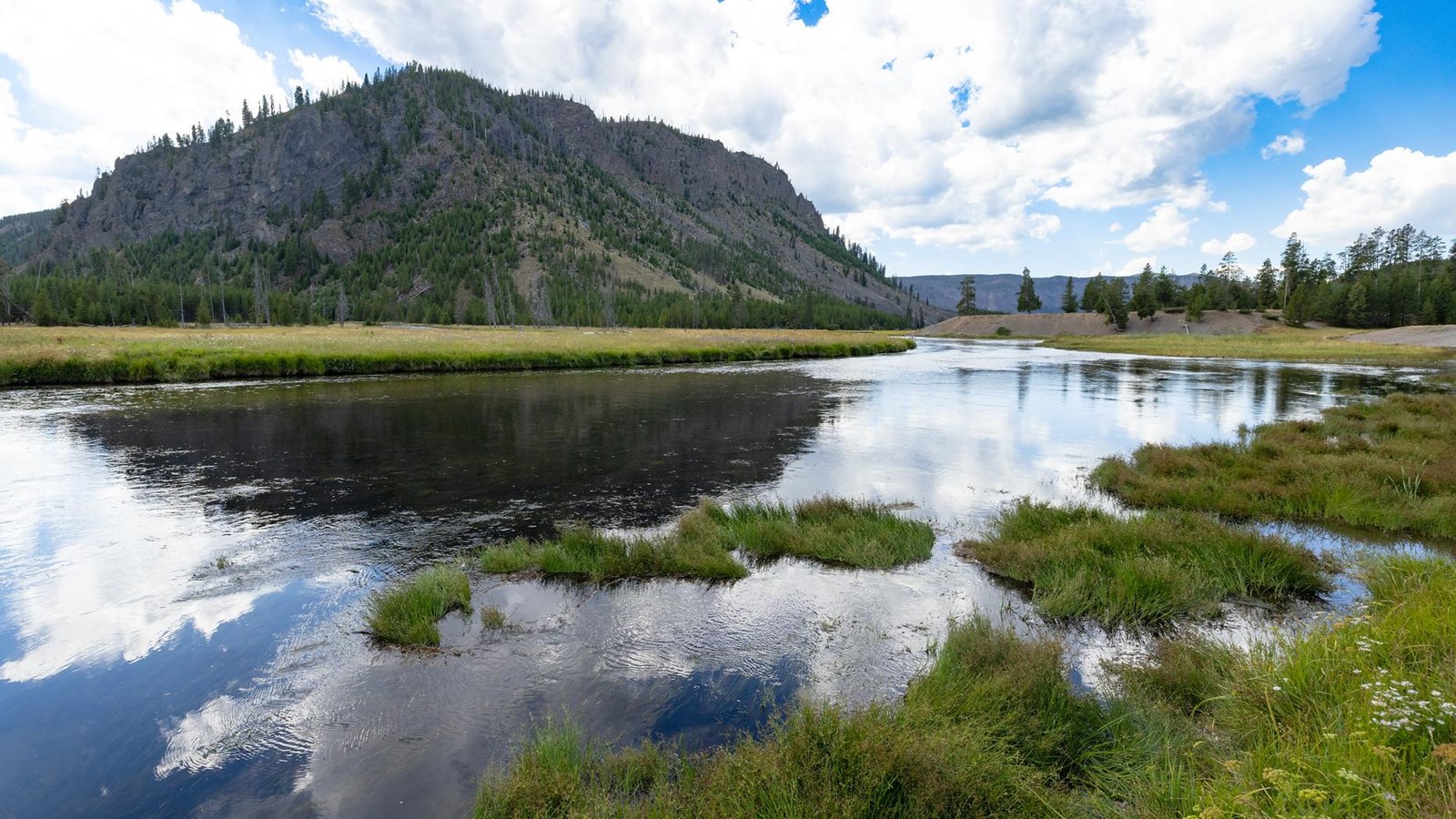Last updated: November 27, 2024
Place
Madison Junction

NPS / Jacob W. Frank
Food/Drink - Snacks, Historical/Interpretive Information/Exhibits, Restroom, Toilet - Flush
At Madison Junction, the Gibbon River joins the Firehole River to form the Madison River.
The Gibbon River flows from Grebe Lake through the Norris area to Madison Junction. The Firehole River starts south of Old Faithful and flows through the park’s major hydrothermal basins north to Madison Junction. The Madison joins the Jefferson and the Gallatin rivers at Three Forks, Montana, to form the Missouri River.
The cliffs you see are the rim of the Yellowstone Caldera, plus lava flows. National Park Mountain is actually part of the lava flows. Some of these lava flows come down to the road through Firehole Canyon, approximately one mile south of Madison Junction. Gibbon Falls, four miles north of the junction, drops 84 feet (0.3 m) over a remnant of the caldera rim.
Swimming in Yellowstone
South of Madison Junction is the entrance to the Firehole Canyon Drive, a one-way route that follows the Firehole River. Along this route are views of the Firehole Falls and a swimming area where the water is influenced by thermal activity below the surface.
Swimming is undertaken at your own risk. Please note that climbing the cliffs around the swimming area erodes the thin topsoil and damages area habitat. Jumping from the cliffs is very dangerous and is forbidden.
Seven Mile Bridge
Seven Mile Bridge is located midway between (and seven miles from both) the West Entrance and Madison Junction. This landmark serves as a convenient reference point and separates the rugged lava-lined Madison Canyon east of the bridge from gentle hills to the west.
National Park Mountain
The legend, which you can read about at the Madison Information Station, tells of explorers camping here in 1870 and deciding Yellowstone should be set aside as a national park. It is a wonderful story, but it isn’t true. Explorers did camp at the junction in 1870, but they apparently did not discuss the national park idea.
They camped in a location where people have camped for centuries. Archeologists have found campfire remnants, obsidian flakes, and bone fragments dating back at least 10,000 years.
Think Safety, Act Safely
From burning hot hydrothermal features, to unpredictable wildlife, to steep terrain, Yellowstone is a dangerous place. You are responsible for your safety. As such, please remember these safety tips:
- Never touch any hydrothermal waters—they can scald you.
- Observe safe distances from all wildlife.
- Stay behind fencing, guard rails, and ledges.
- Use caution when around park waters—they are cold and fast.
- Show patience and courtesy to other people.
